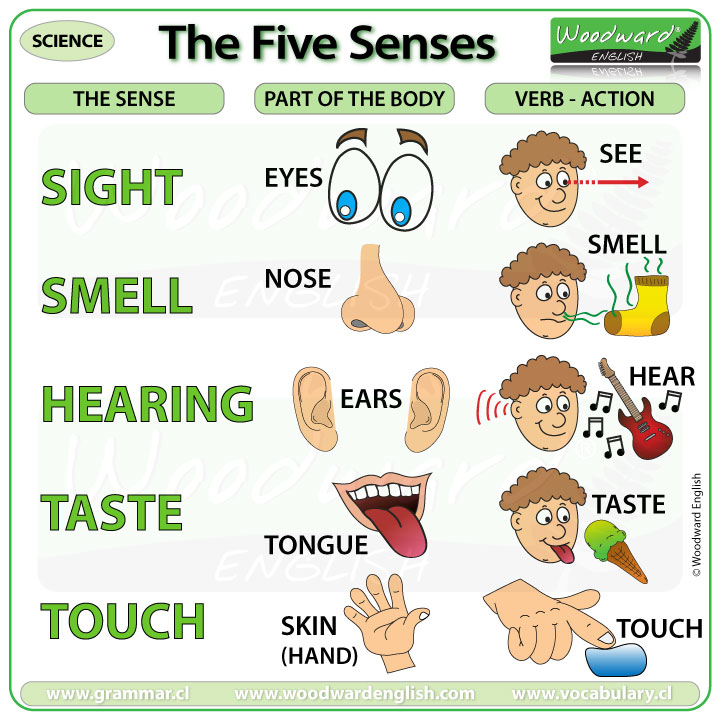Origins and Spread of COVID-19

The COVID-19 pandemic, caused by the severe acute respiratory syndrome coronavirus 2 (SARS-CoV-2), has had a profound impact on global health, economies, and societies. Understanding the origins and spread of this virus is crucial for informing public health responses and preventing future pandemics.
Origins of COVID-19
The origin of SARS-CoV-2 remains a subject of ongoing scientific investigation. However, the prevailing scientific consensus points to a zoonotic origin, meaning the virus likely originated in animals and then jumped to humans. The most likely source is believed to be bats, which are known to harbor a wide variety of coronaviruses.
- Initial Outbreak: The first known cases of COVID-19 were reported in Wuhan, China, in late December 2019. The initial outbreak was linked to a live animal market in Wuhan, suggesting that the virus may have jumped from animals to humans at this location.
- Intermediate Host: While bats are considered the likely source of SARS-CoV-2, an intermediate animal host is believed to have facilitated the transmission to humans. The exact intermediate host remains unknown, but several candidates have been investigated, including pangolins and mink.
Factors Contributing to Global Spread
Several factors contributed to the rapid global spread of COVID-19:
- Human-to-Human Transmission: SARS-CoV-2 is highly contagious and spreads easily through respiratory droplets released when an infected person coughs, sneezes, or talks. The virus can also spread through contact with contaminated surfaces.
- Global Travel and Trade: The interconnected nature of the modern world, with extensive international travel and trade, facilitated the rapid spread of the virus across continents. Infected individuals could easily travel long distances, introducing the virus to new populations.
- Lack of Early Detection and Response: In the early stages of the pandemic, there was a lack of widespread testing and awareness of the virus. This delayed the identification of cases and hindered efforts to contain the spread.
- Social Factors: Factors such as population density, social gatherings, and healthcare infrastructure also played a role in the spread of the virus. In densely populated areas, close contact between individuals increased the risk of transmission.
Timeline of Significant Events, Who covid 19
The COVID-19 pandemic has been marked by a series of significant events:
- January 2020: The World Health Organization (WHO) declares a Public Health Emergency of International Concern (PHEIC) in response to the growing outbreak in China.
- March 2020: The WHO declares the COVID-19 outbreak a pandemic, as cases surge globally.
- April 2020: The first COVID-19 vaccines enter clinical trials.
- December 2020: The first COVID-19 vaccines are authorized for emergency use in the United States and the United Kingdom.
- January 2021: Global vaccination efforts begin, with healthcare workers and vulnerable populations prioritized.
- July 2021: The Delta variant of SARS-CoV-2 emerges, leading to a resurgence of cases in many countries.
- November 2021: The Omicron variant of SARS-CoV-2 is identified, characterized by a high number of mutations and increased transmissibility.
- 2022-present: The COVID-19 pandemic continues to evolve, with new variants emerging and vaccination efforts ongoing.
Impact of COVID-19 on Society: Who Covid 19

The COVID-19 pandemic has had a profound and multifaceted impact on society, leaving an indelible mark on economies, social structures, and individual well-being. Its repercussions have been felt across the globe, disrupting daily life, altering social interactions, and leaving behind a legacy of challenges that continue to be addressed.
Economic Consequences
The pandemic’s economic consequences have been far-reaching, causing widespread job losses, business closures, and disruptions to global supply chains. Governments implemented lockdowns and travel restrictions to curb the spread of the virus, leading to a sharp decline in economic activity.
- Job Losses: Millions of workers lost their jobs as businesses were forced to close or reduce operations. The hospitality, tourism, and retail sectors were particularly hard hit, as were industries reliant on global trade.
- Business Closures: Many businesses, especially small and medium-sized enterprises (SMEs), struggled to survive the economic downturn and were forced to close permanently. The pandemic’s impact on supply chains, with disruptions to manufacturing and logistics, further exacerbated the situation.
- Supply Chain Disruptions: The pandemic exposed vulnerabilities in global supply chains, as disruptions to manufacturing, transportation, and logistics led to shortages of essential goods and materials. This had a ripple effect on businesses and consumers alike, impacting production, pricing, and availability.
Social and Cultural Impact
The pandemic has significantly impacted social and cultural norms, forcing individuals to adapt to new ways of living and interacting. Lockdowns, travel restrictions, and social distancing measures have led to changes in social behavior, communication, and community engagement.
- Social Distancing: Social distancing measures, designed to limit physical contact and reduce the spread of the virus, have significantly altered social interactions. People have been encouraged to avoid crowded places, maintain physical distance, and limit gatherings, leading to a shift in social norms and behaviors.
- Increased Digital Reliance: The pandemic has accelerated the adoption of digital technologies for communication, work, education, and entertainment. Virtual meetings, online learning, and remote work have become commonplace, highlighting the importance of digital infrastructure and access for maintaining social connections and economic activity.
- Mental Health Challenges: The pandemic has had a significant impact on mental health, leading to increased rates of anxiety, depression, and stress. Lockdowns, isolation, and uncertainty have contributed to these challenges, particularly for vulnerable populations such as older adults, children, and those with pre-existing mental health conditions.
Mental Health Challenges
The pandemic has presented significant mental health challenges for individuals and communities. The stress of lockdowns, social isolation, economic uncertainty, and the fear of illness have taken a toll on mental well-being.
- Increased Anxiety and Depression: The pandemic has led to a surge in anxiety and depression, as individuals cope with the uncertainty and disruption to their lives. The fear of infection, financial insecurity, and the loss of social connections have contributed to these mental health challenges.
- Social Isolation and Loneliness: Lockdowns and social distancing measures have resulted in social isolation and loneliness for many people. The inability to interact with loved ones, participate in social activities, or maintain social connections has had a negative impact on mental well-being.
- Grief and Loss: The pandemic has brought about widespread grief and loss, as individuals have lost loved ones to the virus. The experience of grief and mourning has been compounded by the inability to hold traditional funerals or gatherings, further isolating those who have lost loved ones.
Responses to the COVID-19 Pandemic

The COVID-19 pandemic, a global health crisis of unprecedented proportions, demanded immediate and decisive action from governments, healthcare systems, and individuals alike. Countries worldwide implemented a wide range of public health measures, ranging from stringent lockdowns to targeted interventions, aiming to curb the spread of the virus and protect their populations. This section explores the diverse responses to the pandemic, highlighting the key roles played by healthcare professionals, scientists, and researchers in mitigating its impact.
Comparison of Public Health Measures
The global response to the COVID-19 pandemic was characterized by a diverse range of public health measures, reflecting the unique circumstances and priorities of each nation. While some countries adopted strict lockdown measures, others opted for more targeted interventions. This section compares and contrasts the public health measures implemented by different countries, highlighting the strengths and limitations of each approach.
- Lockdowns: Several countries, including China, Italy, and the United Kingdom, implemented strict lockdowns, restricting movement and gatherings to varying degrees. These measures aimed to slow the spread of the virus by reducing contact between individuals. While lockdowns were effective in reducing transmission, they also had significant economic and social consequences, leading to business closures, job losses, and disruptions to daily life.
- Social Distancing: Social distancing measures, such as maintaining physical distance, avoiding large gatherings, and wearing face masks, were widely implemented across the globe. These measures aimed to reduce the risk of transmission by limiting close contact between individuals. Social distancing, while less restrictive than lockdowns, played a crucial role in slowing the spread of the virus and reducing the burden on healthcare systems.
- Testing and Contact Tracing: Widespread testing and contact tracing were essential components of many countries’ pandemic response. Testing allowed for early identification of infected individuals, while contact tracing helped to identify and isolate individuals who may have been exposed to the virus. Effective testing and contact tracing strategies were crucial for breaking chains of transmission and preventing outbreaks.
- Travel Restrictions: Many countries implemented travel restrictions, including border closures and quarantine requirements, to limit the import of cases from other countries. These measures aimed to slow the spread of the virus by reducing the flow of people across borders. While travel restrictions were effective in reducing the risk of importation, they also had significant economic and social consequences, disrupting trade and tourism.
Role of Healthcare Professionals, Scientists, and Researchers
The COVID-19 pandemic highlighted the vital roles played by healthcare professionals, scientists, and researchers in responding to global health emergencies. Their collective efforts were instrumental in understanding the virus, developing effective treatments, and ultimately controlling the pandemic.
- Healthcare Professionals: Healthcare professionals, including doctors, nurses, and other medical staff, were on the front lines of the pandemic, providing essential care to patients and working tirelessly to manage the overwhelming surge in cases. They faced immense pressure and risk, working long hours in challenging conditions, and demonstrating incredible resilience and dedication.
- Scientists and Researchers: Scientists and researchers played a critical role in understanding the virus, its transmission, and its impact on human health. They conducted groundbreaking research to develop diagnostic tests, identify potential treatments, and ultimately develop effective vaccines. Their tireless efforts provided crucial insights into the virus and paved the way for effective interventions.
Development and Distribution of COVID-19 Vaccines
The development of COVID-19 vaccines was a remarkable scientific achievement, representing a triumph of global collaboration and innovation. The rapid development and distribution of vaccines were crucial for mitigating the impact of the pandemic, reducing transmission, and protecting vulnerable populations.
- Vaccine Development: The development of COVID-19 vaccines was unprecedented in its speed, driven by a global effort to combat the pandemic. Scientists and researchers from around the world collaborated to develop and test multiple vaccine candidates, using innovative technologies and approaches. The successful development of safe and effective vaccines was a testament to the power of scientific collaboration and innovation.
- Vaccine Distribution: The distribution of COVID-19 vaccines presented logistical challenges, particularly in low- and middle-income countries with limited resources. Global initiatives, such as the COVAX facility, aimed to ensure equitable access to vaccines for all countries. However, disparities in vaccine access persisted, highlighting the need for continued efforts to ensure equitable distribution and overcome vaccine hesitancy.
Who covid 19 – Who could have imagined, back in the days of carefree childhood, that a pandemic would bring us all to our knees? It feels like a distant, surreal dream, much like the tiny plastic worlds we used to create in our Polly Pockets Airbnbs.
Now, as we navigate the complexities of COVID-19, those miniature worlds seem like a distant, comforting memory.
COVID-19, a virus that swept the globe, forced communities to adapt and innovate. In the face of this unprecedented challenge, leaders like Mayor Tiffany Henyard stepped up, implementing strategies to protect their citizens and navigate the uncertainties of the pandemic.
The pandemic’s impact on our world continues to be felt, but it also serves as a reminder of the strength and resilience of humanity in the face of adversity.
